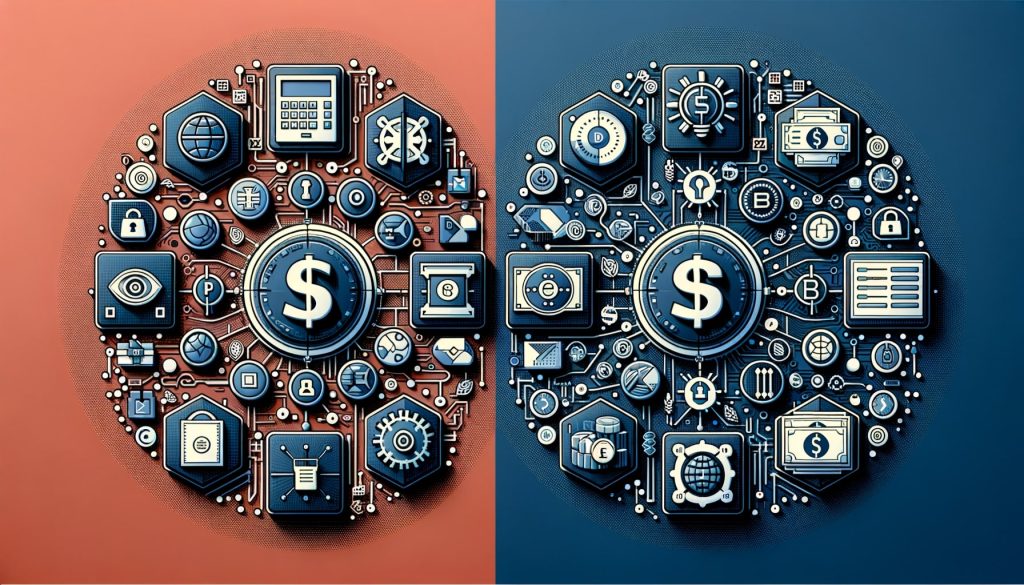In today’s digital age, peer-to-peer (P2P) payments have become increasingly popular as a convenient and efficient way to transfer money between individuals. P2P payments allow users to send and receive funds directly from their bank accounts or mobile wallets, eliminating the need for cash or checks. This article will provide a comprehensive overview of P2P payments, including their evolution, different types of platforms, step-by-step process, advantages and disadvantages, security measures, and the future of financial technology.
The Evolution of P2P Payments: From Cash to Digital Transactions
P2P payments have come a long way from the traditional methods of exchanging cash or writing checks. With the advent of digital technology, the financial industry has witnessed a significant shift towards electronic transactions. The rise of smartphones and mobile banking apps has further accelerated this transformation, making P2P payments more accessible and user-friendly.
Initially, P2P payments were limited to cash transactions between individuals. People would physically hand over money to each other, which was not only inconvenient but also posed security risks. As technology advanced, banks introduced online banking services that allowed customers to transfer funds electronically. However, these transfers were often limited to within the same bank or required the recipient’s bank account details.
The introduction of third-party payment platforms revolutionized P2P payments by enabling users to send money to anyone with just their email address or mobile number. Platforms like PayPal, Venmo, and Zelle emerged as popular choices, offering seamless and instant transfers. These platforms acted as intermediaries, facilitating the transaction and ensuring the security of funds.
Exploring Different Types of P2P Payment Platforms

There are various types of P2P payment platforms available today, each with its own unique features and target audience. Understanding the differences between these platforms is crucial in choosing the one that best suits your needs.
- Traditional Banks: Many traditional banks now offer P2P payment services through their online banking platforms. These services allow customers to transfer funds directly from their bank accounts to another person’s account. While convenient for existing bank customers, these transfers may take longer to process compared to dedicated P2P payment platforms.
- Third-Party Payment Apps: Third-party payment apps like PayPal, Venmo, and Cash App have gained immense popularity due to their user-friendly interfaces and quick transfers. These apps often link to the user’s bank account or credit card, allowing them to send money to anyone with just their email address or mobile number. Some of these apps also offer additional features like splitting bills, requesting payments, and even making online purchases.
- Mobile Wallets: Mobile wallets, such as Apple Pay, Google Pay, and Samsung Pay, have integrated P2P payment functionalities into their platforms. These wallets store the user’s payment information securely and allow them to send money to others by simply tapping their smartphones. Mobile wallets are particularly convenient for in-person transactions, as they eliminate the need for physical cash or cards.
- Cryptocurrency Platforms: With the rise of cryptocurrencies like Bitcoin, P2P payments have expanded into the realm of digital currencies. Cryptocurrency platforms enable users to send and receive digital assets directly, without the need for intermediaries or traditional banking systems. While still relatively niche, these platforms offer a decentralized and secure alternative for P2P transactions.
How P2P Payments Work: Step-by-Step Process
The process of making a P2P payment may vary slightly depending on the platform used, but the underlying principles remain the same. Here is a step-by-step guide to understanding how P2P payments work:
- Choose a P2P Payment Platform: Select the P2P payment platform that best suits your needs. Consider factors such as ease of use, security features, and compatibility with your bank or mobile wallet.
- Sign Up and Verify: Create an account on the chosen platform and provide the necessary information to verify your identity. This may include your name, email address, phone number, and sometimes even your social security number.
- Link Your Bank Account or Mobile Wallet: Connect your bank account or mobile wallet to the P2P payment platform. This step allows you to fund your P2P transactions directly from your bank account or mobile wallet balance.
- Add Recipient’s Information: Enter the recipient’s details, such as their email address, mobile number, or username associated with the platform. Ensure that the information is accurate to avoid any payment errors.
- Specify the Amount: Enter the amount you wish to send to the recipient. Some platforms may also allow you to add a note or description for reference.
- Confirm and Send: Review the transaction details and confirm the payment. Depending on the platform, you may be required to enter a PIN, password, or biometric authentication to authorize the transfer.
- Notification to Recipient: The recipient will receive a notification, either via email, SMS, or within the platform itself, informing them of the incoming payment.
- Recipient Claims the Payment: The recipient can then claim the payment by logging into their own P2P payment account or following the instructions provided in the notification. They may need to link their own bank account or mobile wallet to receive the funds.
- Funds Transfer: Once the recipient claims the payment, the funds are transferred from your account to theirs. The time it takes for the transfer to complete may vary depending on the platform and the recipient’s bank or mobile wallet.
- Confirmation and Receipt: Both the sender and recipient will receive confirmation of the completed transaction. Some platforms also provide digital receipts for record-keeping purposes.
The Advantages and Disadvantages of P2P Payments

P2P payments offer several advantages over traditional payment methods, but they also come with their own set of disadvantages. Understanding these pros and cons can help users make informed decisions when choosing P2P payment platforms.
Advantages of P2P Payments
- Convenience: P2P payments allow users to send and receive money anytime, anywhere, as long as they have an internet connection. This eliminates the need for physical cash or checks and provides a hassle-free experience.
- Speed: P2P payments are typically processed instantly or within a few minutes, depending on the platform and the recipient’s bank or mobile wallet. This makes them ideal for urgent or time-sensitive transactions.
- Accessibility: P2P payment platforms are widely available and can be accessed through smartphones, tablets, or computers. This accessibility ensures that users can make payments regardless of their location or device.
- Cost-Effective: P2P payments often have lower transaction fees compared to traditional methods, such as wire transfers or money orders. Some platforms even offer free transfers within certain limits, making them an affordable option for everyday transactions.
- Splitting Bills: Many P2P payment apps allow users to split bills with friends or family members. This feature simplifies group payments, such as splitting restaurant bills or sharing rent, by dividing the total amount among multiple recipients.
Disadvantages of P2P Payments
- Security Risks: While P2P payment platforms implement security measures, such as encryption and authentication, there is still a risk of unauthorized access or fraudulent transactions. Users must be cautious when sharing personal information and ensure they are using reputable platforms.
- Limited Recipient Options: P2P payments are typically limited to individuals who are also registered users of the same platform. This can be a drawback if the recipient does not have an account or prefers a different payment method.
- Transaction Limits: Some P2P payment platforms impose transaction limits, either on a daily, weekly, or monthly basis. These limits may restrict the amount of money that can be sent or received within a specific time frame.
- Dependency on Technology: P2P payments rely heavily on technology, including internet connectivity, mobile devices, and the stability of the payment platform. Any disruptions or technical issues can hinder the ability to make or receive payments.
- Lack of Consumer Protection: Unlike traditional banking systems, P2P payment platforms may not offer the same level of consumer protection. In case of disputes or unauthorized transactions, the resolution process may be more complex and time-consuming.
Ensuring Security and Privacy in P2P Transactions

Security and privacy are paramount when it comes to P2P transactions. Users must take certain precautions to protect their personal and financial information from unauthorized access or misuse. Additionally, P2P payment platforms themselves have a responsibility to implement robust security measures to safeguard their users’ data.
1. User Precautions:
- Choose a reputable platform: Research and select a P2P payment platform that has a proven track record of security and privacy.
- Use strong passwords: Create unique and complex passwords for your P2P payment accounts, and avoid using the same password for multiple platforms.
- Enable two-factor authentication: Activate two-factor authentication (2FA) whenever possible, as it adds an extra layer of security by requiring a second form of verification, such as a code sent to your mobile device.
- Be cautious with personal information: Avoid sharing sensitive information, such as your social security number or full bank account details, unless necessary. Legitimate P2P payment platforms should not require this information for basic transactions.
- Regularly update and monitor your accounts: Keep your P2P payment app and associated devices up to date with the latest security patches. Regularly review your transaction history and account settings for any suspicious activity.
2. Platform Security Measures:
- Encryption: P2P payment platforms should use encryption protocols to protect user data during transmission. Look for platforms that utilize SSL/TLS encryption, which ensures that data is securely transmitted over the internet.
- Authentication: Platforms should implement strong authentication methods, such as biometric authentication (fingerprint or facial recognition) or one-time passwords, to verify user identities and prevent unauthorized access.
- Fraud detection and prevention: P2P payment platforms should have robust fraud detection systems in place to identify and prevent fraudulent transactions. This may include monitoring for unusual activity, analyzing transaction patterns, and implementing machine learning algorithms.
- Privacy policies: Review the platform’s privacy policy to understand how your personal information is collected, stored, and shared. Look for platforms that prioritize user privacy and provide clear guidelines on data handling.
P2P Payments and the Future of Financial Technology
P2P payments have already made a significant impact on the financial industry, and their influence is expected to grow in the future. As technology continues to advance, several trends and developments are shaping the future of P2P payments.
- Integration with Messaging Apps: P2P payment platforms are increasingly integrating with popular messaging apps, allowing users to send money directly within their conversations. This seamless integration simplifies the payment process and enhances user experience.
- Contactless Payments: The COVID-19 pandemic has accelerated the adoption of contactless payments, including P2P transactions. With the rise of mobile wallets and near-field communication (NFC) technology, users can make payments by simply tapping their smartphones or using QR codes.
- Blockchain and Cryptocurrencies: The emergence of blockchain technology and cryptocurrencies has opened up new possibilities for P2P payments. Blockchain-based platforms offer decentralized and secure transactions, eliminating the need for intermediaries and reducing transaction costs.
- Enhanced Security Measures: As P2P payments become more prevalent, security measures will continue to evolve to combat emerging threats. Biometric authentication, artificial intelligence-based fraud detection, and advanced encryption techniques will play a crucial role in ensuring the security and privacy of P2P transactions.
- Global Expansion: P2P payments are not limited to specific regions or currencies. As platforms expand their services globally, users will be able to send and receive money internationally with ease, eliminating the need for traditional remittance methods.
Frequently Asked Questions about P2P Payments
Q1. Are P2P payments safe?
P2P payments can be safe if users take necessary precautions and choose reputable platforms. It is important to use strong passwords, enable two-factor authentication, and avoid sharing sensitive information.
Q2. How long does it take for a P2P payment to process?
The processing time for P2P payments varies depending on the platform and the recipient’s bank or mobile wallet. Some transfers can be completed instantly, while others may take a few minutes or even a few days.
Q3. Can I use P2P payments for business transactions?
While P2P payments are primarily designed for personal transactions, some platforms offer business accounts or additional features for small businesses. However, it is important to check the terms and conditions of the platform to ensure compliance with business transactions.
Q4. Are there any transaction limits for P2P payments?
Some P2P payment platforms impose transaction limits, either on a daily, weekly, or monthly basis. These limits may vary depending on the platform and the user’s account status.
Q5. Can I reverse a P2P payment if I made a mistake?
Once a P2P payment is sent, it is generally difficult to reverse the transaction. It is important to double-check the recipient’s details before confirming the payment to avoid any errors.
Conclusion
Peer-to-peer (P2P) payments have revolutionized the way individuals transfer money, offering convenience, speed, and accessibility. From the evolution of cash to digital transactions, the emergence of various P2P payment platforms, and the step-by-step process of making a P2P payment, this article has provided a comprehensive overview of P2P payments.
While P2P payments offer numerous advantages, such as cost-effectiveness and splitting bills, they also come with certain disadvantages, including security risks and limited recipient options. It is crucial for users to take precautions to ensure the security and privacy of their transactions, while P2P payment platforms must implement robust security measures to protect their users’ data.
Looking ahead, P2P payments are expected to continue evolving, integrating with messaging apps, embracing contactless payments, and exploring the potential of blockchain and cryptocurrencies. With enhanced security measures and global expansion, P2P payments are set to shape the future of financial technology, providing individuals with seamless and efficient ways to transfer money.
